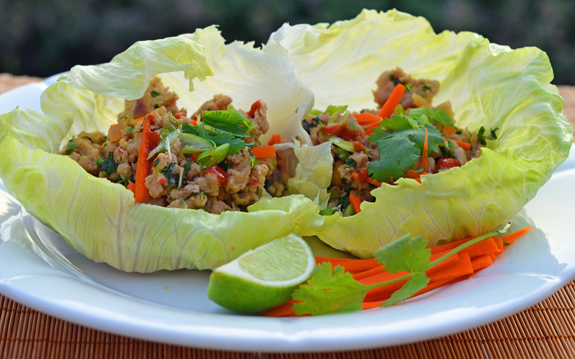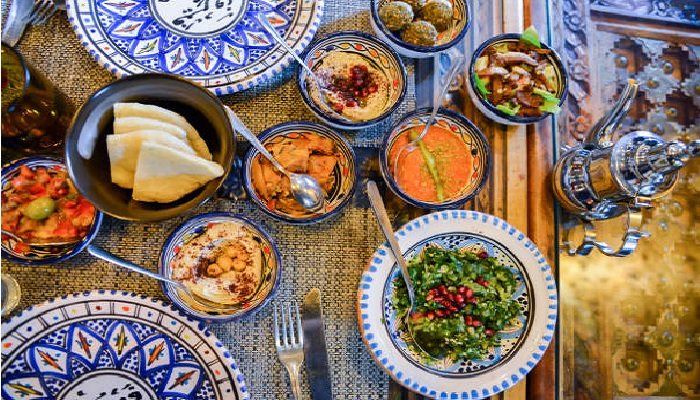How to Make Low-Carb Middle Eastern Food

Are you craving the rich flavors of Middle Eastern cuisine but worried about the carbohydrate content? Fear not! With a few clever substitutions and some culinary creativity, you can enjoy the vibrant tastes of the Middle East without compromising your low-carb lifestyle. Let's dive into the world of low-carb Middle Eastern food and discover how to transform traditional dishes into healthier, carb-conscious delights.
Understanding Middle Eastern Cuisine
Middle Eastern cuisine is renowned for its bold flavors, aromatic spices, and hearty dishes. From the tangy yogurt-based sauces to the succulent grilled meats, every bite is a journey through a rich cultural heritage. However, many traditional dishes are high in carbohydrates, which can be a challenge for those following a low-carb diet. But with a few tweaks, you can still enjoy the essence of Middle Eastern food while keeping your carb intake in check.
The Basics of Low-Carb Cooking
Before we delve into specific recipes, let's understand the basics of low-carb cooking. The key is to replace high-carb ingredients with low-carb alternatives. For example, instead of using regular flour, you can opt for almond flour or coconut flour. Similarly, swap out sugar for natural sweeteners like stevia or erythritol. These substitutions allow you to enjoy your favorite dishes without the guilt.
Low-Carb Middle Eastern Recipes
1. Low-Carb Hummus
Hummus is a staple in Middle Eastern cuisine, but traditional recipes are high in carbs due to the chickpeas. To make a low-carb version, you can use zucchini or cauliflower as a base. Blend these vegetables with tahini, garlic, lemon juice, and olive oil until smooth. The result is a creamy, low-carb hummus that pairs perfectly with veggie sticks or low-carb crackers.
2. Low-Carb Falafel
Falafel is another Middle Eastern favorite, but the traditional recipe is made with chickpeas, making it high in carbs. For a low-carb alternative, use ground almonds or walnuts as the base. Mix these with herbs, spices, and a binding agent like eggs or flaxseed meal. Form the mixture into patties and bake or fry until golden brown. Serve with a side of low-carb tahini sauce for a delicious, carb-conscious meal.
3. Low-Carb Shawarma
Shawarma is a popular Middle Eastern dish featuring marinated and grilled meat. To make a low-carb version, simply marinate your choice of meat (chicken, beef, or lamb) in a mixture of spices, garlic, and olive oil. Grill the meat until cooked through, then slice thinly. Serve the shawarma with a side of low-carb pita bread or wrapped in lettuce leaves for a healthier option.
4. Low-Carb Baba Ganoush
Baba ganoush is a creamy eggplant dip that's perfect for dipping veggies or spreading on low-carb bread. To make a low-carb version, roast an eggplant until soft, then blend the flesh with tahini, garlic, lemon juice, and olive oil. Season with salt and pepper to taste. This dish is not only low in carbs but also packed with nutrients.
5. Low-Carb Tabbouleh
Tabbouleh is a refreshing Middle Eastern salad traditionally made with bulgur wheat. To make a low-carb version, replace the bulgur with cauliflower rice. Mix the cauliflower rice with chopped parsley, mint, tomatoes, cucumber, and a dressing made from lemon juice, olive oil, and salt. This salad is light, flavorful, and perfect for a low-carb diet.
Tips for Success
1. Experiment with Spices
Middle Eastern cuisine is all about the spices. Don't be afraid to experiment with different combinations to find the perfect blend. Spices like cumin, coriander, paprika, and sumac can add depth and complexity to your dishes without adding carbs.
2. Use High-Quality Ingredients
The quality of your ingredients can make or break a dish. Opt for fresh, high-quality ingredients whenever possible. This will not only enhance the flavor of your dishes but also provide better nutritional value.
3. Plan Ahead
Low-carb cooking often requires some planning and preparation. Take the time to gather your ingredients and plan your meals in advance. This will make the cooking process smoother and more enjoyable.
Conclusion
Cooking low-carb Middle Eastern food is not only possible but also incredibly rewarding. By making a few simple substitutions and using high-quality ingredients, you can enjoy the vibrant flavors of the Middle East without compromising your low-carb lifestyle. So, what are you waiting for? Get in the kitchen and start experimenting with these delicious, low-carb recipes!
FAQs
1. Can I use regular flour in low-carb recipes?
No, regular flour is high in carbohydrates. Instead, use low-carb alternatives like almond flour or coconut flour.
2. What is a good substitute for chickpeas in hummus?
Zucchini or cauliflower can be used as a low-carb substitute for chickpeas in hummus.
3. How can I make low-carb pita bread?
You can make low-carb pita bread using almond flour, psyllium husk powder, and other low-carb ingredients. There are many recipes available online.
4. What is the best way to cook eggplant for baba ganoush?
Roasting the eggplant in the oven until soft is the best way to cook it for baba ganoush. This method brings out the natural sweetness of the eggplant.
5. Can I use store-bought tahini in my recipes?
Yes, store-bought tahini is a convenient option for making low-carb Middle Eastern dishes. Just be sure to check the label for any added sugars or preservatives.



Belum ada Komentar untuk "How to Make Low-Carb Middle Eastern Food"
Posting Komentar